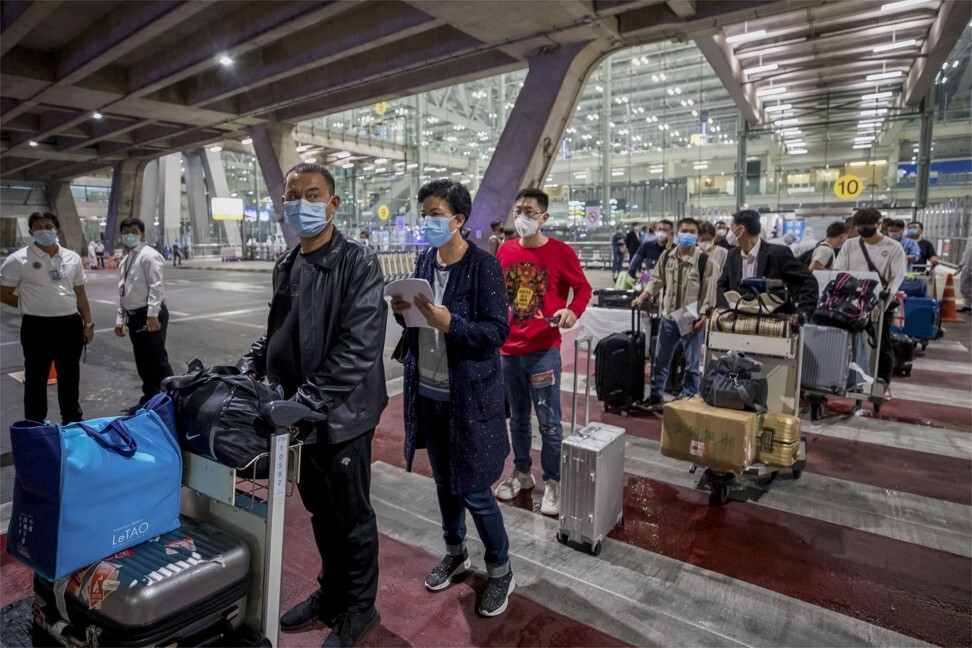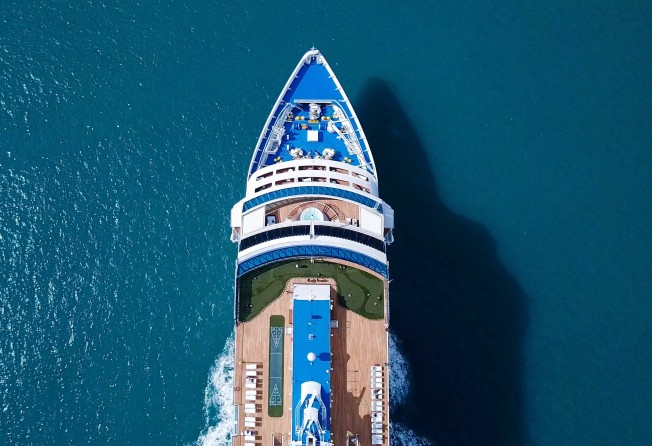
Cruises to nowhere? Singapore passengers put pleasure before pandemic – and climate
- Genting’s ‘superstaycation’ cruise deal has had ‘overwhelming’ response
- The average cruise ship emits more sulphur oxides than 13 million cars

Cast your minds back, if you will, to February. For Europe and the United States, the coronavirus – not yet a pandemic – remained an Asian problem, an abstract concept that manifested in rising red numbers and dots on a map. But for the passengers and crew of the Diamond Princess cruise ship, which was quarantined in the Japanese port of Yokohama on February 3 after a former guest had tested positive for the virus, Covid-19 was all too real.
Of the 3,711 people on board, more than 700 ended up being infected, resulting in 14 deaths. At the time, the ship accounted for more than half of the world’s reported cases outside mainland China. It was even classified as a “country/region/sovereignty” in its own right on the Johns Hopkins University Covid-19 dashboard.
After outbreaks occurred on other vessels, sailings were cancelled and stock prices collapsed. Pundits predicted the end of cruising altogether. In March, American broadcaster CNBC called the coronavirus “cruise lines’ 9/11”.
“Coronavirus has dealt the cruise ship industry what looks like a crippling blow,” reported The Financial Times, in June.
But operators Royal Caribbean International and Genting Cruise Lines refuse to sink without a trace and have instead announced plans to offer residents of Singapore “cruises to nowhere” from November. “Under Singapore’s safety protocols, the liners have to cap capacity at 50 per cent and can only make out-and-back trips,” reported Nikkei Asian Review.
Despite an absence of port calls and excursions, The Straits Times reports that Genting received more than 6,000 bookings in just five days, while Royal Caribbean says that demand has “exceeded expectations”.
“The response has been overwhelming,” Michael Goh, head of international sales at Genting, told The Straits Times. “We call it a ‘superstaycation’ because we offer all three meals, outdoor activities like waterslides and rock climbing and even a Christmas musical. It is a complete holiday experience. The ship itself is the destination.”
And if you think travel is all about the journey, not the destination, well, a cruise to nowhere is the journey – like a twisted Möbius strip adrift in the Strait of Malacca for nights on end. Each passenger surrounded by hundreds of strangers. All of whom are (hopefully) wearing face masks. Dystopian, much?
But seriously, much like those flights to nowhere airlines are so keen on, aimless sailings will contribute to climate breakdown. In 2009, environmental organisation Friends of the Earth created a “cruise ship report card”, hoping to educate travellers that “taking a cruise is more harmful to the environment and human health than many other forms of travel”.
This year it scored 18 major cruise lines operating out of US ports on environmental factors, including the treatment of sewage, noting: “At sea, what you flush down the toilet can actually be dumped into the ocean […] This sewage contains pollutants including faecal matter, bacteria, viruses, pathogens, nutrients, hazardous waste and pharmaceuticals.”
Then there is the matter of fuel emissions. According to the United States Environmental Protection Agency, for each day spent at sea, an average cruise ship emits more sulphur dioxide than 13 million cars do over the same period. You’ll be glad you packed that N95.
Incidentally, Royal Caribbean scored a C- for its sewage treatment but an F for its air pollution, averaging a D overall, while Genting was spared the examination because it doesn’t operate in US waters. Both companies have expressed the requisite willingness to address the environmental implications of their industry. (That they are operating cruises to nowhere suggests that business concerns beat environmental ones for the moment.)
Although open only to residents of the Lion City – sorry to any Hongkongers hoping to take advantage of the expected travel bubble and hop aboard – these sailings will be watched by cruise companies and enthusiasts from across the globe for signs of life in an industry that is ailing after years of growth. If CNBC is right and the pandemic is the industry’s 9/11, then after a drastic downturn we can expect passengers to return in greater numbers than before.
Good news for cruise lines, less so for those who would prefer that our planet remained habitable.
Chinese tourists return to Thailand

For months, the excited chatter of mainland Chinese tourists has been missing from the streets of Thailand. But that changed on October 20, when 39 (some reports put the number at 41) travellers landed at Bangkok’s Suvarnabhumi Airport from Shanghai. Described as “pioneers” of the country’s special tourist visa, their arrival was not met with pomp or circumstance but forms, a tracking app and 14 days in self-isolation. Once the quarantine is complete, though, the visitors will have 90 days to enjoy a tourist-free Thailand.
And while 39 might be a mere fraction of the more than 10 million Chinese who visited the Land of Smiles last year, their return paves the way for many more, with flights from elsewhere in mainland China and Europe planned. We can almost hear the rustling of promo material for Bangkok hotel quarantine packages from here …
Bali’s ‘kite order task force’ called in to tackle rogue kite flier
It isn’t careless drone pilots who disrupt flight traffic in Bali, it’s kite fliers. On October 21, online news site Coconuts Bali reported that the Indonesian island’s “kite order task force” (yes, really) was called in to tackle a kite flying dangerously close to Ngurah Rai International Airport.
Kite flying has long been a tradition in Bali, with festivals held across the island during its windy season (July to August), and according to Coconuts: “The kite in question, painted to look like an owl and predominantly coloured with green and red, was about six feet tall.” After being asked to bring it back to land, its owner was provided with guidance about where it could be safely flown, i.e. not right by the runway.